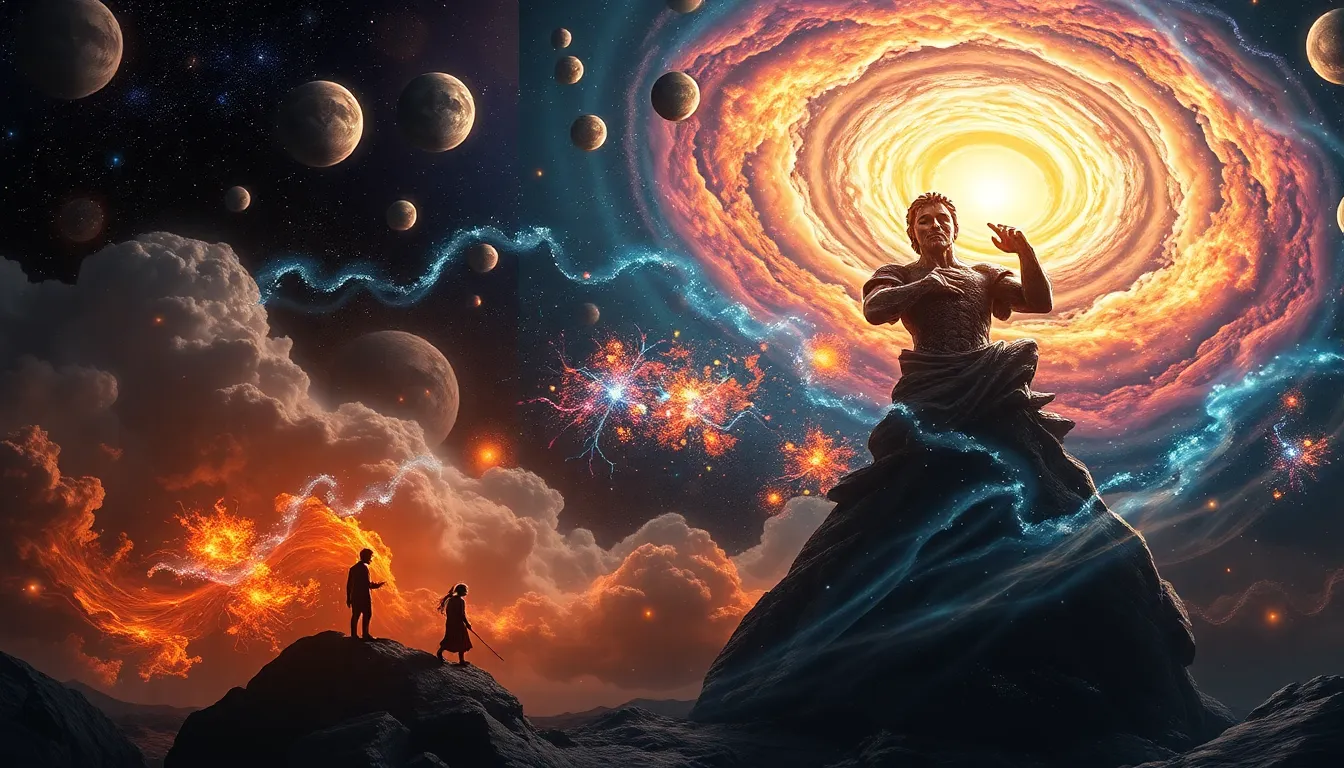1. Introduction
Persia, an ancient land steeped in rich history and culture, boasts a vibrant tapestry of myths and legends that have captivated generations. These myths, woven into the very fabric of Persian society, served as a source of guidance, inspiration, and entertainment, shaping beliefs and customs that continue to resonate today. Festivals, integral to the Persian cultural landscape, have played a pivotal role in preserving and celebrating these ancient tales, ensuring their transmission from one generation to the next.
2. Nowruz: The Persian New Year
Nowruz, the Persian New Year, stands as a testament to the deep-rooted connection between mythology and festivity in Persia. Celebrated on the spring equinox, Nowruz marks the rebirth of nature and the triumph of light over darkness. Its origins can be traced back to the mythical king Jamshid, credited with establishing the Persian calendar and ushering in an era of peace and prosperity.
Mythology entwines with tradition in the observances of Nowruz. The epic tale of Jamshid recounts his defeat of the evil Zahhak, a tyrant who ruled with an iron fist. Jamshid's victory is seen as a symbolic representation of the triumph of good over evil, aligning with the spirit of renewal and hope embodied in Nowruz. The traditional customs associated with Nowruz, such as Haft Sin, a symbolic table setting with seven items representing auspiciousness, further reinforce the significance of the festival as a celebration of life and new beginnings.
3. Mehregan: The Autumn Festival
Mehregan, the autumn festival, holds a special significance in Persian mythology. Dedicated to Mithra, a revered deity associated with light, justice, and covenant, Mehregan celebrates the bounty of the harvest season. The festival's origins lie in ancient times, predating the arrival of Islam in Persia.
Mithra's heroic exploits are central to the mythology surrounding Mehregan. His valiant battle with the primeval bull-demon, symbolizing the struggle between good and evil, resonates with the themes of cosmic balance and harmony emphasized in the festival. The connection between Mithra and light is further underscored by the autumnal timing of Mehregan, as the days grow shorter, reminding us of the importance of light in our lives. The traditional customs observed during Mehregan, such as feasting, gift-giving, and water offerings, reflect a deep appreciation for nature's bounty and the blessings bestowed upon humanity.
4. Shab-e Yalda: The Longest Night
Shab-e Yalda, the longest night of the year, holds a unique place in Persian mythology and festivity. Celebrated on the winter solstice, this ancient tradition marks the turning point of the year, as the days begin to grow longer, signifying the eventual return of light and warmth. Shab-e Yalda's origins are steeped in pre-Islamic Persia, where it was believed that on this night, Ahriman, the spirit of darkness and evil, held sway.
Mythology and folklore intertwine in the observances of Shab-e Yalda. The birth of Mithra, the god of light, is often associated with the festival, symbolizing the eventual triumph of light over darkness. Storytelling, an integral part of Shab-e Yalda, often centers around tales of heroes and mythical creatures, reinforcing the belief in the power of good to overcome evil. The traditional feast, featuring fruits and nuts, symbolizes abundance and resilience in the face of darkness.
5. Sadeh: The Festival of Fire
Sadeh, the festival of fire, occupies a significant position in Persian mythology. Celebrated forty days after the winter solstice, Sadeh marks the gradual increase in daylight hours and the approach of spring. The festival's origins can be traced to ancient times, when fire was revered as a sacred element, symbolizing purity, light, and renewal.
Mythology plays an integral role in the significance of Sadeh. The story of Siavash, a mythical hero known for his truthfulness and purity, is central to the festival. Siavash's fiery ordeal, where he emerges unscathed from a blazing fire, symbolizes his triumph over evil and his unwavering adherence to righteousness. The traditional customs observed during Sadeh, such as bonfires, jumping over flames, and chanting, reflect a purification ritual, a cleansing of negativity and a welcoming of the approaching spring.
6. Tirgan: The Festival of Water
Tirgan, the festival of water, is a vibrant celebration steeped in ancient Persian mythology. Held on the 13th day of Tir, the fourth month of the Persian calendar, Tirgan commemorates the mythical archer Arash, whose heroic act saved the land from tyranny.
Mythology and legend intertwine in the story of Arash. The Shah of Persia, engaged in a conflict with the Turanian king Afrasiab, sought to settle the dispute through a unique challenge. Arash, renowned for his archery skills, was tasked with shooting an arrow from dawn till dusk, with the landing point determining the new border between the two kingdoms. With the fate of his people resting on his shoulders, Arash shot an arrow that flew for an unprecedented distance, securing a vast territory for Persia.
The traditional customs associated with Tirgan reflect the festival's connection to water. Water fights and swimming are common practices, symbolizing the cleansing and purifying power of water. The story of Arash also emphasizes the importance of sacrifice and heroism in the face of adversity, values deeply ingrained in Persian culture.
7. Sepandarmazgan: The Festival of Love
Sepandarmazgan, the festival of love, is a unique celebration dedicated to love, fertility, and earth. Held on the 25th day of Esfand, the last month of the Persian calendar, Sepandarmazgan is associated with the goddess Spenta Armaiti, the embodiment of love, devotion, and earth's abundance.
Mythology and folklore play a significant role in the observances of Sepandarmazgan. The festival is believed to have originated from an ancient Persian myth about the goddess Anahita, associated with fertility and water. In this myth, Anahita descends to earth disguised as a beautiful woman and bestows blessings upon those who show kindness and generosity.
The traditional customs observed during Sepandarmazgan reflect the festival's focus on love and fertility. Gift-giving, particularly between lovers, is a common practice, symbolizing affection and devotion. The festival also emphasizes the importance of showing kindness and compassion towards all beings, aligning with the values embodied by Spenta Armaiti.
8. Chaharshanbe Suri: The Festival of Fire
Chaharshanbe Suri, the Festival of Fire, is a vibrant pre-Nowruz celebration observed on the last Tuesday night before the Persian New Year. Rooted in ancient Zoroastrian beliefs, Chaharshanbe Suri is a time for purification, renewal, and warding off evil spirits.
Mythology and symbolism are deeply intertwined in the traditions associated with Chaharshanbe Suri. Fire plays a central role in the festivities, representing its purifying and cleansing power. Bonfires are lit throughout the night, and people jump over the flames, symbolically leaving behind negativity and embracing the promise of a new year. The tradition of firecrackers is believed to ward off evil spirits and bring good fortune.
The mythology surrounding Chaharshanbe Suri often centers around the mythical figure of Azar, the angel of fire. According to Zoroastrian beliefs, Azar is responsible for guarding the sacred fire, a symbol of purity and light. The festival's customs and rituals are seen as a way of honoring Azar and seeking his blessings for the coming year.
9. Sizdah Bedar: The Nature Outing
Sizdah Bedar, literally meaning "thirteenth day outside," is a joyous tradition observed on the 13th day of the Persian New Year. This day marks the end of Nowruz festivities and is dedicated to spending time outdoors in nature.
Sizdah Bedar is steeped in symbolism and ancient beliefs. The number 13 is considered unlucky in Persian culture, and spending the day outdoors is believed to ward off misfortune. The tradition of tying Sabzeh, a symbolic sprout grown for Nowruz, to trees or throwing it into running water is believed to bring good luck and prosperity for the year ahead.
Mythology and folklore also play a role in the observances of Sizdah Bedar. The festival is associated with the mythical figure of Sizdah, a mischievous spirit believed to bring bad luck on the 13th day of the New Year. By spending the day outdoors, people symbolically avoid Sizdah's influence and embrace the blessings of nature.
10. Conclusion
The mythological festivals of Persia offer a captivating glimpse into the rich tapestry of myths, legends, and beliefs that have shaped Persian culture and identity for centuries. These festivals, deeply rooted in ancient traditions and passed down through generations, continue to be celebrated with enthusiasm and reverence, reminding us of the enduring power of mythology to inspire, unite, and bring meaning to our lives.
Frequently Asked Questions (FAQ)
Q: What is the significance of mythology in Persian culture?
A: Mythology plays a vital role in Persian culture, serving as a source of guidance, inspiration, and entertainment. Myths and legends have shaped Persian beliefs, customs, and traditions, providing a rich tapestry of stories that have been passed down through generations.
Q: How do festivals contribute to the preservation of mythology?
A: Festivals provide a platform for celebrating and transmitting myths and legends. Through traditional customs, rituals, and storytelling, festivals keep these ancient tales alive, ensuring their continuation for future generations.
Q: What are some of the most popular mythological festivals in Persia?
A: Some of the most well-known mythological festivals in Persia include Nowruz (the Persian New Year), Mehregan (the autumn festival), Shab-e Yalda (the longest night), Sadeh (the festival of fire), and Tirgan (the festival of water).
Q: How do these festivals reflect Persian values and beliefs?
A: The mythological festivals of Persia often embody core values and beliefs such as the triumph of good over evil, the importance of light and renewal, the power of love and fertility, and the connection to nature.
Q: Why are these festivals still celebrated today?
A: These festivals continue to be celebrated today because they hold deep cultural significance, providing a link to the past and a sense of continuity for present and future generations. Additionally, the festivities offer opportunities for community gathering, strengthening social bonds and fostering a shared cultural identity.



